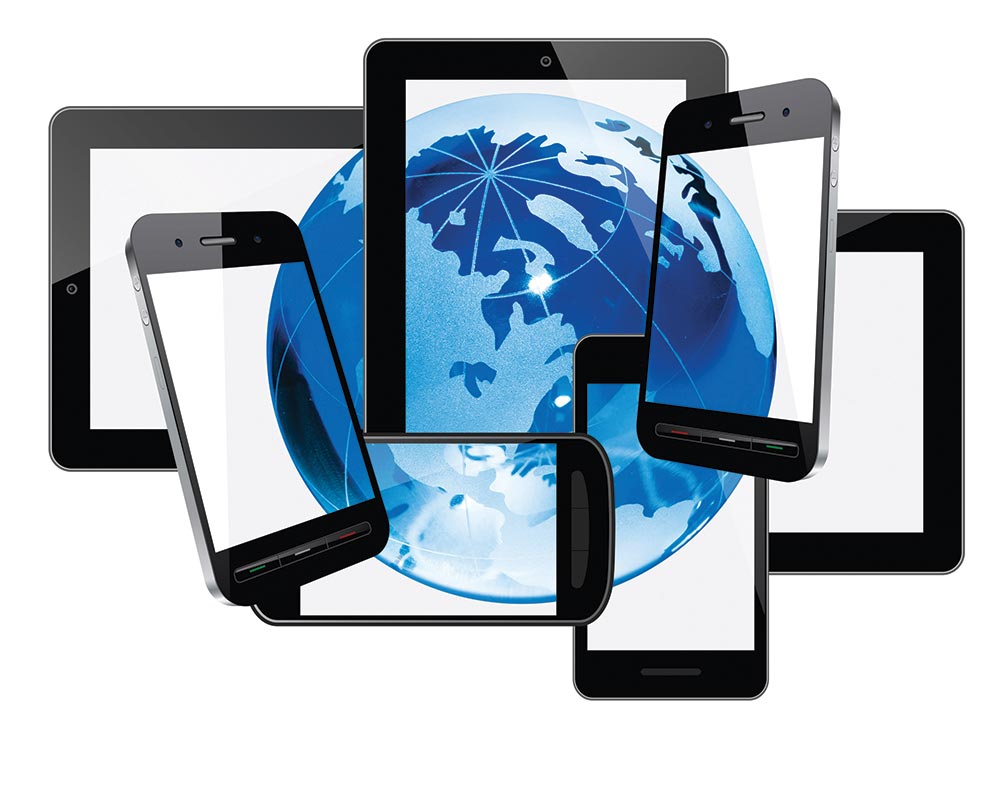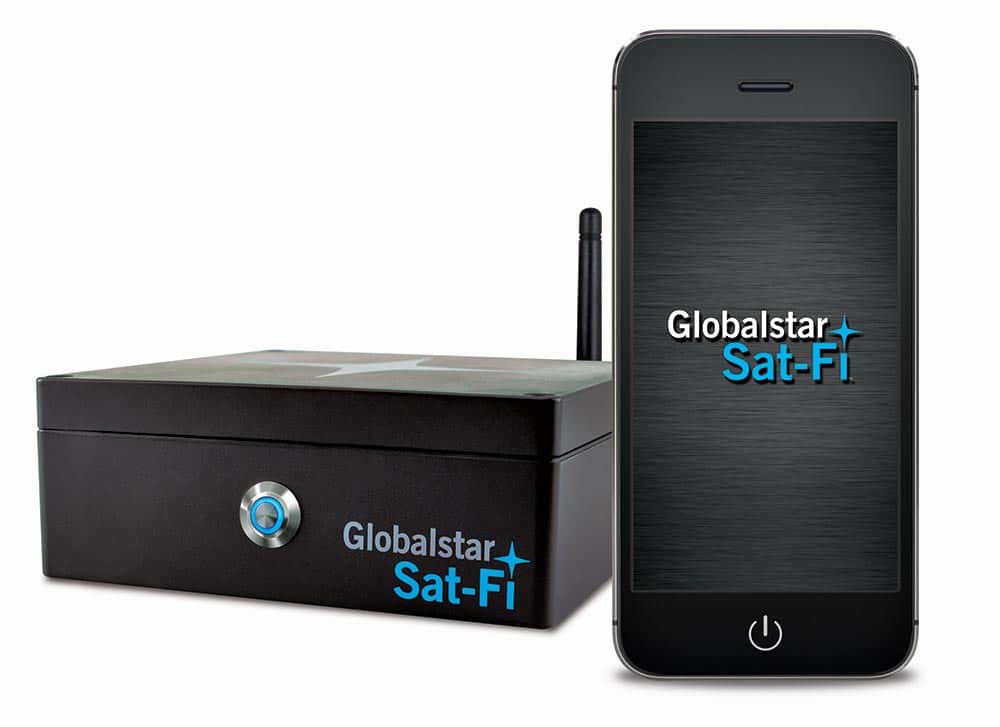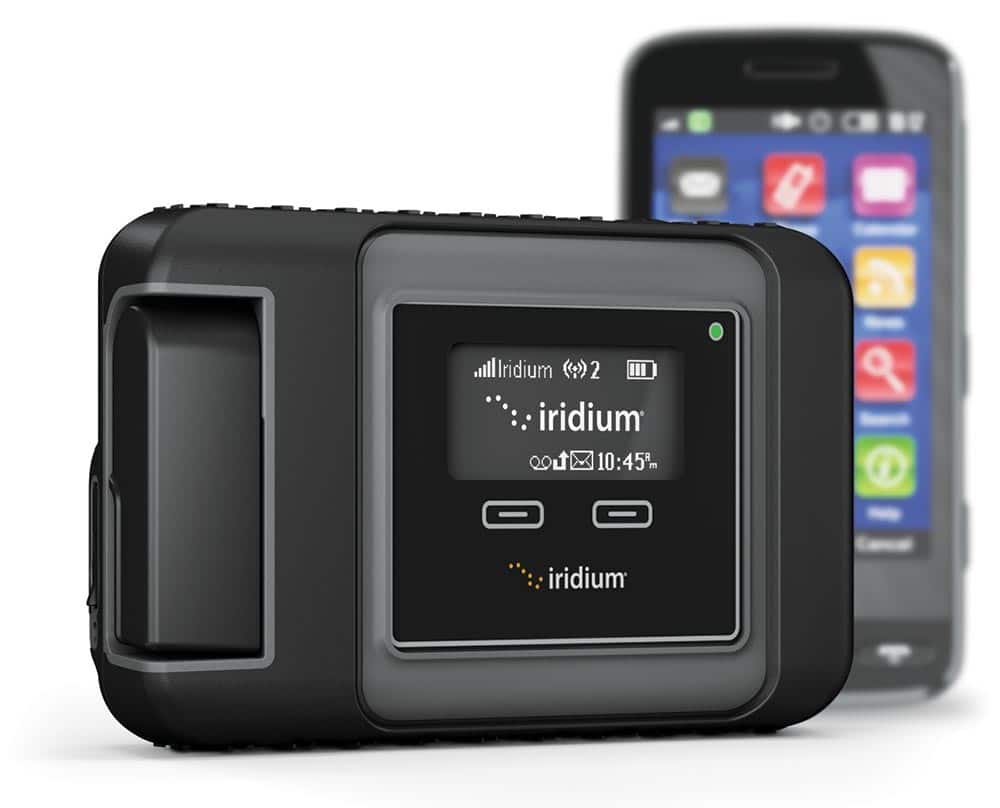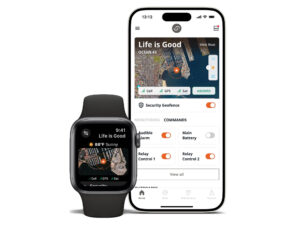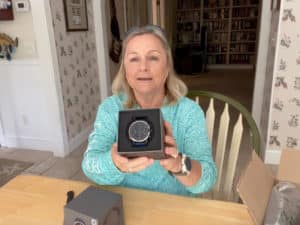Like many people, I carry my smartphone along on fishing trips. When I’m near the coast, the cell signal is strong. But run offshore a bit, and I drop off the grid. Yes, sometimes that’s welcome. But at other times, I might like to taunt my brother with a photo of a big tuna, or call home to say I’m running late.
Satellite phones — hand-held or fixed units — do fill that offshore gap. But wouldn’t it be nice to just use a smartphone? Well, now we can. The satphone has married the smartphone.
Product Debuts
Satphone companies Globalstar and Iridium are now shipping their Sat-Fi and GO! products, respectively, to distributors and retailers. Both units are designed to communicate with satellites, and relay data via Wi-Fi to and from smartphones and tablets. A third entity — Inmarsat, with its partner, AddValue — is expected to offer the new IsatHub/Wideye iSavi by press time. And a fourth, Thuraya, currently offers the technology in select locations outside the United States.
“The idea behind [Globalstar Sat-Fi] is to remove the mystery of satellite communication, to broaden the market, and to integrate crystal-clear satellite communication into people’s daily experience,” says L. Barbee Ponder, Globalstar’s general counsel and vice president of regulatory affairs.
All of the emerging devices for U.S. anglers operate similarly:
- All use a piece of hardware — a terminal or hub (kind of like a Wi-Fi hot spot) — to receive and transmit satellite signals.
- All connect that terminal to the smartphone using Wi-Fi.
- All employ two free apps to enable your smartphone (or tablet) to accept the satellite information — one for voice and one for data (email, texting, social-media uploading).
One important note: Although these units provide satellite connectivity to smartphones, users don’t text, email or make calls as they would normally. For instance, to send and receive emails, you’d create a new account during setup, using globalstarmail.com or myiridium.net. So if I send an email to a friend from offshore, it comes from cwoodward@globalstarmail.com.
And while you can use the contacts stored within your smartphone to make satellite calls, your satellite phone number is different from your smartphone’s number.
Purpose Parameters
Globalstar Sat-Fi was designed as a portable device, but it requires a hard-line power connection to a 12-volt battery, an AC outlet or a 12-volt receptacle, such as the cigarette lighter in a car. The terminal or hub is a black box, measuring about 6-by-6 inches, standing 2 inches high and weighing about 2 pounds. It comes with an external satellite antenna.
Iridium GO! is battery powered and fits into a shirt pocket. The lithium-ion battery, which is user replaceable, lasts for 5½ hours of talk time or 15 hours on standby. It measures 4½ inches by 3 inches, and stands 1¼ inches high, weighing about 11 ounces. The GO! comes with a small satellite antenna on the terminal.
Globalstar and Iridium each have their own proprietary satellite constellations. Sat-Fi and GO! customers can expect the same coverage, call quality and data speeds as buyers of other, equivalent satphones from these companies. In addition, Globalstar says its Sat-Fi can accommodate eight users (within a radius of about 100 feet), while Iridium says GO! can handle up to five users within the same space. However, only one smartphone or tablet user at a time can activate a connection.
Speed and Safety
Globalstar lists its data-connection speed as 9.6 kb per second; with compression, it becomes about four times faster. Iridium says it delivers speeds of 2.4 kb per second and 20 kb with compression. (iSavi’s rate is published as 240/384 kbps send/receive; its MSRP is $1,499.)
Neither the Globalstar nor Iridium speeds allow for rapid Web browsing, though both do offer Web services. Using mobile websites helps a little, but even loading a basic home page generally takes several minutes.
All services provide some form of SOS. With Sat-Fi, you dial 911 (within the United States and Canada) for a connection to the GEOS International Emergency Response Coordination Center. GO! features an SOS button (on the terminal and within the app) that you can program for your own contacts or for GEOS, anywhere in the world.
Sat-Fi hardware costs $999, with monthly usage plans starting around $39.99 and unlimited plans costing $149.99 a month. GO!’s retail price averages $800 to $900. A quick review of service pricing online shows that monthly packages start at about $45 and range up to $129 for unlimited use, plus an activation fee.
Both companies say smart satphones won’t kill the hand-held satellite-phone market, but these new products do offer iPhone and Android devotees a valuable remote link.
USER EXPERIENCE
To gain some insight into how these products function, I tried the Sat-Fi unit with my own iPhone 5s. For expediency, I set up Sat-Fi to work from my car in a parking lot at the beach, where the antenna had an open view of the sky (key for any satellite-phone connection). I have published a more in-depth article online at sportfishingmag.com/satphonereport, but here are some of the basics of setup and use:
- I downloaded and installed the two Sat-Fi apps, and activated my account on the Globalstar website (via my laptop) using a special code provided to me. During this process, I established a username and password.
- On my iPhone, I opened the data and voice apps, and completed user settings.
- I attached the external patch antenna via a coaxial cable to the back of the terminal, and used the included 12-volt auxiliary-power plug to power up.
- Once the terminal achieved a steady satellite connection, I turned on Wi-Fi in my iPhone and selected the Sat-Fi network. I entered a default password.
- I launched both Sat-Fi apps on my iPhone.
- In the Voice app, I opened my Contacts list and placed a call to Sport Fishing‘s managing editor. After a brief pause, I heard the line ring. The voice mail came on, sounding clear and precise. I left a message. You can hear an audio file from that message at the /satphonereport link above (on page 2).
- In the data app, I composed text emails and sent them to the outbox. I selected Send/Receive Mail, and Sat-Fi initiated a data connection. (A dedicated send/receive command means that a data connection connects only on demand, which holds down usage costs.) The email send took mere seconds.
- I had already configured my Facebook account to accept posts from the satphone using “mobile settings.” I selected social media in the Sat-Fi app, composed a text post and sent it to the outbox. It took moments to send as well.
- Finally, I selected the Chat icon in the Voice app and sent a text message. Text messages send in real time, and responses come in immediately with an alert when the phone is connected.
